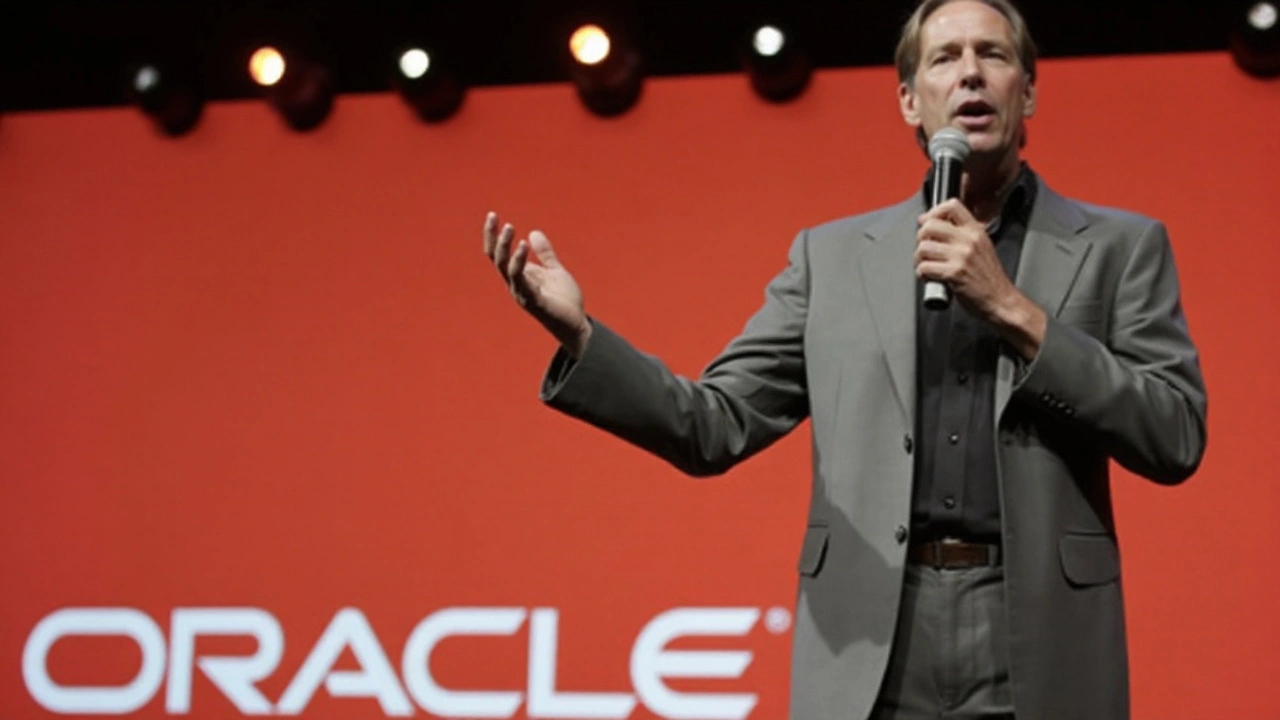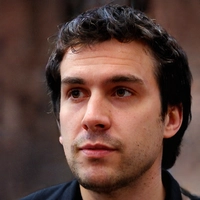A 40% shock move and a $100 billion day
A single trading burst turned into a once-in-a-generation wealth swing. After Oracle’s earnings blew past expectations, its stock ripped more than 40% in minutes, vaulting co-founder Larry Ellison to an estimated $393 billion fortune, according to Bloomberg’s Billionaires Index. For a brief stretch on September 10, 2025, he leapfrogged Elon Musk at the top of the global rich list.
The move wasn’t just big—it was historic. Ellison’s stake, roughly 1.16 billion Oracle shares, meant every dollar added to the stock price translated into more than a billion dollars added to his net worth. Bloomberg estimated his one-day gain at between $89 billion and $101 billion—one of the largest single-session wealth jumps ever recorded for an individual tied to a public company.
By the next morning, the leaderboard flipped again. Bloomberg had Musk back in first by a sliver, at about $385 billion, with Ellison just behind. That back-and-forth captured the new reality of billionaire rankings: when fortunes are tethered to a handful of volatile mega-cap tech stocks, positions can change with a single headline or an hour of trading.
What lit the fuse? Oracle said the quiet part out loud: the artificial intelligence buildout is no longer a promise—it’s a pipeline. The company reported a surge in demand for high-performance cloud infrastructure built for training and running large AI models. Executives pointed to multibillion-dollar orders and a swelling backlog, the kind of visibility that investors crave when the market is trying to separate AI talk from AI revenue.
Oracle has spent the past two years positioning its cloud arm to handle massive GPU clusters and high-bandwidth networking, the plumbing that generative AI workloads demand. It struck partnerships with chip suppliers and AI firms, offered capacity tailored to training giant models, and leaned into a value pitch: performance for less than the hyperscale incumbents. When the orders hit, the stock reacted like a coiled spring.
There’s another layer here: scarcity. Powerful AI chips remain hard to get. Capacity is booked out months in advance. Companies racing to build and run models aren’t just buying compute—they’re reserving it. That forward demand shows up in Oracle’s numbers as long-term commitments, and Wall Street pays up for that. It’s why a company that once lagged in public cloud is suddenly in the same conversation as Amazon, Microsoft, and Google in one fast-growing niche.
Ellison, 81, has seen quite a few cycles. The college dropout co-founded Oracle in 1977, rode the database boom, steered the company through the dot-com crash, and shifted into cloud software and infrastructure as the industry changed. He stepped down as CEO in 2014 but stayed on as executive chairman and chief technology officer, roles that kept him close to product decisions—including the AI pivot that has now reshaped Oracle’s market value.
He’s also an investor with a long memory. Ellison served on Tesla’s board from late 2018 to 2022 after buying millions of shares. Over the past two years, Oracle and Musk’s ventures have crossed paths more than once in the AI arena. At one point, Musk’s AI company explored renting large blocks of GPUs from Oracle’s cloud. Whether those arrangements hold or not, they underlined the same point: compute is the commodity everyone wants, and the supplier list is short.
For context, the single-day jump Bloomberg pegged for Ellison sits in rare air. Prior swings in tech wealth have been huge—tens of billions in a day for the likes of Musk, Jeff Bezos, Bernard Arnault, and Mark Zuckerberg when their companies surprised the market. But a nine-figure daily gain is another tier. It takes a perfect setup: a massive personal stake, a liquid stock, a shock earnings beat, and an AI narrative that investors are willing to fund at premium multiples.
Why billionaire rankings swing by the hour
If the leaderboard feels chaotic, it’s because it is. Wealth trackers rely on live market data for public stakes and models for private holdings. Bloomberg’s index updates through the trading day and values private companies using the latest funding rounds, tender offers, or comparable public multiples. That’s why it pegged Musk at $385 billion as Oracle’s surge shifted the math.
Forbes, which updates its numbers differently and leans on periodic revaluations for private assets, still had Musk on top at around $439 billion—thanks largely to its treatment of SpaceX. These gaps aren’t mistakes; they’re the result of different methods for valuing assets that don’t trade every second. When the private piece is large—SpaceX for Musk, or other closely held stakes—the spread can be wide.
Another wrinkle: public wealth is often “paper” until an owner sells. Founders like Ellison and Musk typically borrow against their shares rather than dump them, both to manage taxes and to keep control. That means their day-to-day net worth can swing wildly without changing their actual cash position. It’s breathtaking to watch—and mostly theoretical until the stock is sold.
Even so, the scale is hard to ignore. Ellison’s current fortune could theoretically cover the yearly expenses of about five million American households at the median income—roughly the size of Florida’s population. Put another way: one blockbuster print from a single company can now move wealth equivalent to the budgets of large U.S. cities.
Underneath the spectacle is a real shift in enterprise tech. AI is moving into production at big companies—contact centers, code generation, document search, design, drug discovery, and industry-specific copilots. These aren’t free experiments. They require dedicated compute, fast networking, storage throughput, and contracts that run into the billions over years. Oracle’s pitch—that its cloud can deliver large GPU clusters with predictable performance—has resonated with customers that care about throughput more than brand names.
That’s the commercial engine behind the chart action. If Oracle can keep filling capacity, expand data centers, secure next-generation chips, and convert bookings into recognized revenue, the market will keep rewarding it. If there’s a stumble—chip delays, slower consumption, customer churn—the valuation can snap back just as fast.
Investors will watch a few markers in the months ahead: the pace of new AI bookings, disclosed capacity additions, capital spending plans, and any color on utilization from large customers. Expect questions about the mix between infrastructure and software, too, since higher-margin software growth tends to support richer valuations. Any fresh news on partnerships with leading AI developers or chipmakers would also be material.
For Musk, the math remains equally twitchy. His ranking depends heavily on Tesla’s stock—sensitive to vehicle deliveries, pricing, margins, and the company’s progress in autonomy—as well as periodic revaluations of SpaceX through private share sales. It doesn’t take much for the needle to move. A delivery beat here or a fresh tender offer there, and he’s back on top. A production hiccup or a softer quarter, and he can slide. That’s been the pattern since he first took the No. 1 spot in 2021.
Ellison’s public profile extends beyond spreadsheets. He owns 98% of Lānaʻi, the sixth-largest Hawaiian island, where he’s invested in housing, agriculture, and hospitality. He’s known for aggressive dealmaking, big bets on product direction, and a competitive streak that has defined Oracle for decades. The AI push fits that mold: go where the computing is hardest, sell to customers with the biggest problems, and do it at scale.
The broader market takeaway is simple: we’re in an arms race for AI infrastructure. The winners will lock in long-term contracts, build or lease data centers by the dozen, and secure supply of the most advanced chips. That’s good for revenue visibility—and for founder net worths tethered to those revenues. It also means volatility. When a few headlines can reprice the future of AI demand, they can also reshuffle the richest-person rankings before lunch.
One more practical note about that 40% surge: moves that large in a mega-cap compress years of expected growth into a moment. The bar rises. Future quarters get measured against a new, higher line. Investors will now expect Oracle to keep proving that AI demand isn’t just a spike but a durable wave, with consumption following bookings and new capacity coming online on time and on budget.
That’s the needle Ellison and Oracle will try to thread. For a few hours, the market’s bet on their AI strategy made him the richest man on Earth. The next chapters will be written in data center buildouts, chip deliveries, and customer invoices—the unglamorous details that, lately, have moved trillions in market value and shuffled the rankings of the wealthiest people alive.




